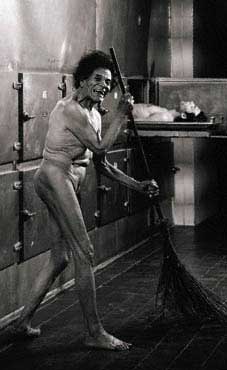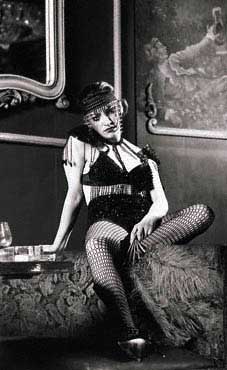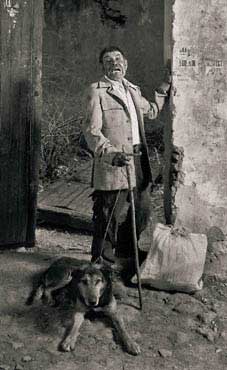
|
|
-
José Raúl Pérez - Mexico
-
My first encounter with TAROT was a fortuitous one. A deck of cards together with a book landed in my hands at the same time, they opened a world of symbolism and tradition which overwhelmed me.
I am a skeptic by nature, and until that moment TAROT was for me nothing more than superstition. Although to this date I maintain a certain intellectual distance from divination, I have come closer through these last two years of work to this sort of intuitive knowledge which I had not fully appreciated before.
Through that first reading and many ensuing ones which were slowly added, I learned that the 22 Major Arcana of Tarot symbolize a universal order. Each card is the representation of different primordial force, which has guided the direction of human actions since the beginning of time. Thus the derived belief that in shuffling the cards the person doing so imbues these with their own destiny. In presenting the cards, the cardreader interprets them based on the relationship that they all have to each other and to the fact that they are either face up or face down, which alters the meaning of their interpretation.
Aside from this aspect of divination, what fascinates me is the symbolic character of the Arcana, a set of symbols which have been fed by various traditions both cultural and religious. Each Arcana is an archetypical personality which serves to represent diverse attributes which are tangible and easy to understand. Thus, for example, the notion of introspection, receptivity, faith, and the contact with the occult are represented by the High Priestess, or modesty, wisdom, capacity for analysis and the search for truth, in the Hermit.
Although these symbols are current ones, one could think that these personalities have aged historically and can hardly be identified with the present. However, in going about in a city like Mexico City one can come to the conclusion that this is not the case. If one observes carefully one will identify the face of The Empress, Justice, The High Priest, even the Devil or The Death.
This is what led me to create the Mexican Tarot, a project which is based on the equivalents, on occasions charged with irony and humor, between the traditional major Arcana and the personalities of Mexico City.
The majority of the individuals in the Mexican Tarot are common people off the street. More than photographing their individual characteristics, the images try to emphasize the generic, and in doing so, convert these into new interpretations of the traditional archetypes.
The search for the models and appropriate locations to represent the various concepts, made the production of each image an experience charged with anecdotes which enriched me, and I feel, did so to the project.
The Tarot of Marseilles, a medieval version, was the source that served me as a reference due to it's purity and style, and because it is after all the oldest set of cards that is conserved intact. The transformation of this reference into a contemporary Mexican Tarot, suggest to the spectator the possibility to see themselves as a destiny that does not escape from the universal order which was set thousands of years ago.
|

|
-
José Raúl Pérez - Mexico
- Mi primer acercamiento al Tarot fue fortuito. Un mazo de cartas junto con un libro, que cayeron casualmente en mis manos, abrieron la puerta hacia un mundo de simbolismo y tradición que me sobrecogió.
Siendo de naturaleza escéptico, hasta ese momento el Tarot no era para mí más que una superstición. Y aunque a la fecha conservo cierta distancia intelectual respecto a la adivinación, el haber trabajado durante más de dos años en este proyecto me ha acercado a un tipo de conocimiento que no había sabido valorar en su justa medida: el conocimiento intuitivo.
A través de esa primera lectura, y de muchas otras sucesivas que se fueron sumando, aprendí que los 22 Arcanos Mayores del Tarot simbolizan un orden universal. Cada Arcano es la representación de diversas fuerzas primordiales, originarias, que han guiado el rumbo de las acciones humanas desde el principio de los tiempos.
De ahí se deriva la creencia de que, al barajar las cartas, la persona les imbuye su propio destino. En la "tirada" de cartas, el cartomántico interpreta con base en las relaciones que se desprenden del orden de las mismas y del hecho de que estén de frente o invertidas, lo que cambia su sentido.
Aisladamente de este aspecto adivinatorio, lo que a mí me fascina es el carácter simbólico de los Arcanos, simbolismo que a lo largo de la historia se ha nutrido de diversas tradiciones, culturas y religiones. Cada Arcano es un personaje arquetípico que sirve para presentar diversos atributos mediante un aspecto tangible y fácil de comprender.
Así, por ejemplo, las ideas de introspección, receptividad, fe y del contacto con lo oculto están personificadas en la Sacerdotisa, así como la modestia, la sabiduría, la capacidad de análisis y la búsqueda de la verdad se concretan en el Ermitaño.
Aunque estos simbolismos están vigentes, podría pensarse que algunos de los personajes han envejecido históricamente y difícilmente pueden identificarse con la actualidad. Sin embargo, el recorrer cotidianamente una ciudad como la de México puede bastar para contradecir ese pensamiento ya que, si se mira bien, seguramente se podrá reconocer el nuevo rostro de la Emperatriz, la Justicia, el Sumo Sacerdote e, incluso, del Diablo o la Muerte en persona.
Este es el principio que da pie al Tarot mexicano, un proyecto caprichoso que se basa en la creación de equivalencias, en ocasiones cargadas de humor e ironía, entre los Arcanos tradicionales del Tarot y personajes actuales de la ciudad de México.
La mayoría de los tipos presentados en el Tarot mexicano son gente de la calle. Más que retratar sus rasgos particulares, las imágenes buscan enfatizar lo genérico y, así, convertirlos en nuevas interpretaciones de los arquetipos tradicionales.
La búsqueda de los modelos y locaciones justos para visualizar los diferentes conceptos hizo que la producción de cada una de las fotografías se convirtiera en una vivencia particular cargada de anécdotas, lo cual me enriqueció personalmente y, siento, en gran medida también enriqueció al proyecto.
El Tarot de Marsella, versión medieval tomada como referencia por su pureza estilística y por ser la más antigua que se conserva como un mazo de baraja completo, se ve así transformado en un Tarot mexicano actual, que propone al espectador el juego de verse a sí mismo como un destino que no escapa al orden universal fijado hace miles de años.
|
|
|
|
SITO UFFICIALE DELL'ARTISTA - ARTIST SITE
|
|
zonezero.com
|
|








